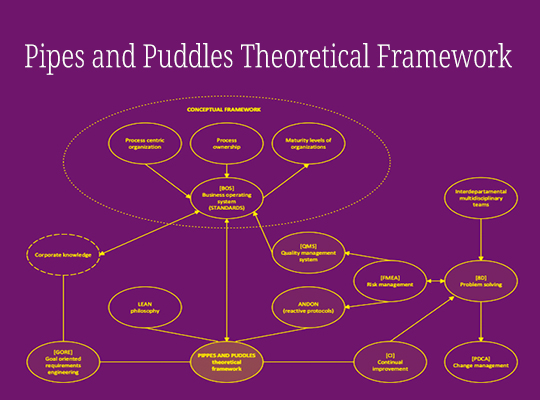
- The “Pipes and Puddles” framework decentralizes standards, enhancing risk management and reducing the total cost of quality.
- Process owners are empowered to improve their processes, continually improving quality management.
- Implementation requires significant cultural and organizational change, supported by intensive training and effective communication.
The Pipes and Puddles framework aims to decentralize standards from a central authority to individual process owners, facilitating continuous improvement and reducing the total cost of quality. Traditional centralized standards create a burden of chore tasks that hinder improvement efforts. This new framework integrates Lean principles, the PDCA cycle, and risk analysis, distinguishing between reactive and preventive problem-solving to maintain low costs associated with poor quality.
This framework promotes a process-centric approach, emphasizing customer focus and aligning processes to enhance customer satisfaction, product quality, and on-time delivery. It involves structuring business processes into three interconnected sub-processes or “pipes,” ensuring each process owner is responsible for their process’s continual improvement and risk management. This approach fosters a decentralized management system where process owners are trained and empowered to handle their processes effectively, leading to a proactive rather than reactive management style.
Adopting the Pipes and Puddles framework results in significant organizational changes. It embeds the quality management system within each process, making each process owner accountable for quality and continuous improvement. This embedded approach transforms the quality function from merely regulatory compliance to a savings-generating mechanism. While the framework has been successfully tested in several industrial and technological firms, its applicability to different contexts, such as supply chains or project-oriented production, remains an open area for future research.
Successful Pipes and Puddles framework implementation requires a strong commitment from top management, effective communication, and intensive training for process owners. It involves managing the typical stages of organizational change, such as forming, storming, norming, performing, and adjourning. Future research aims to refine the framework further, providing detailed guidelines, examples, and instructions to support management and process owners in adopting this innovative approach to risk management and quality improvement.


Leave a Reply
You must be logged in to post a comment.